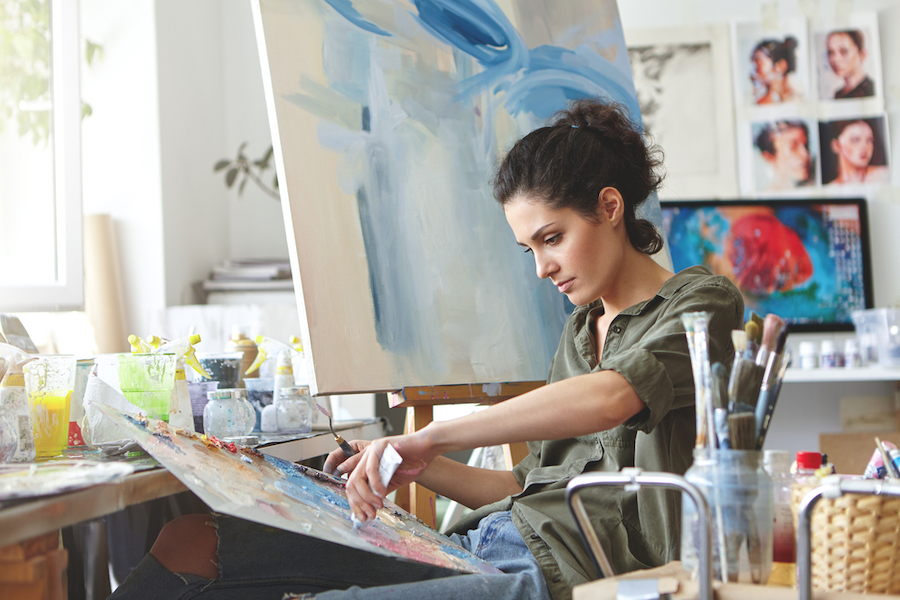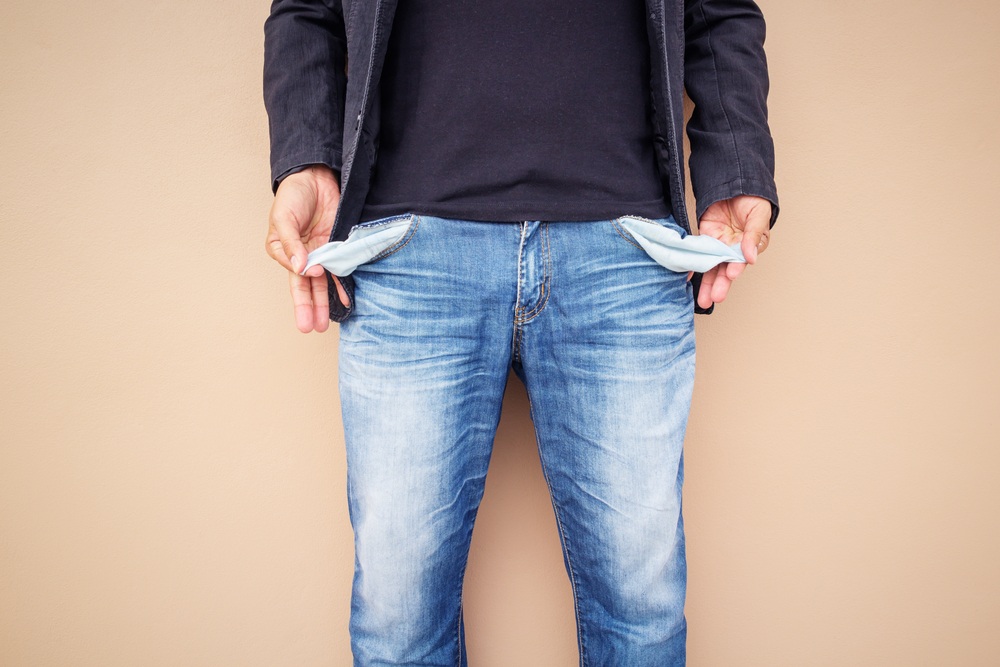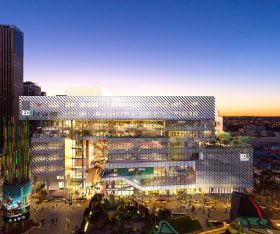To mark International Artist Day (25 October) – a calendar date that shouts out the value of artists’ role within society – we take a stab at the perception of ‘value’, weighing up rhetoric against wages.
During COVID, the verbiage and visibility around the contribution artists and makers have had on our collective wellbeing took a major upswing, not to mention the quick grab of a similar value rhetoric in selling ‘creative cities’ in recent decades, thanks to the value-add of creative communities.
But it could be argued that these value propositions are far from commensurate with what artists earn.
The most recent data places the average gross annual income for an Australian artist at $48,400. (Making Art Work 2017, Australia Council for the Arts). It further states that when adjusted for inflation, average incomes have fallen by 4% since 2009.
In comparison, the average salary across all Australians (excluding bonuses and overtime) is $90,329, and that has experienced a 1.4% rise year-on-year. (Australian Bureau of Statistics May 2021). This is based on a 38-hour week. It is staggeringly – 53% more – than what an artist earns.
When the wages of both part-time and full-time workers were factored in, the average salary dropped to $67,902 before tax – still well above a full-time artist or creative.
Simply, miners and waste collectors earn more than our cultural producers. This issue of declining artist incomes – and the rhetoric versus reality of their value perception – has been on the table for some time now.
The past three Throsby reports for the Australia Council – Don’t Give Up Your Day Job (2003), Do You Really Expect to Get Paid? (2010), and most recently Making Art Work (2017) – have shown that artist incomes are not growing to reflect inflating costs of living.
How can you call the arts ‘an industry’, when more than a third of its primary producers, artists, live below the poverty line?
David Pledger
‘On the latest figures, artists are earning 16% less than in 2000-01 and 19% less than in 2007-08 from their creative work alone,’ a NAVA spokesperson told ArtsHub at the time. ‘As for average income from all sources, it’s been static: $48,400 on the latest figures compared to $48,600 in 2000-01.’
This gap was bought into harsh reality over the past 18-months, when so many practicing creatives found that they did not qualify for JobKeeper, while the building industry – among others – were, and boomed.
It has reopened the discussion about the need for a National Artist Wage, or Universal Basic Income (UBI).

THE CASE FOR A UBI
In September 2019, NAVA recommended a new charter of artists fees, and while their intentions were welcomed, the recommendations tabled faced some criticism within the sector – especially by small to medium organisations, stating that they would be so hamstrung by the fees expected they would not be able to deliver programs. So who pays to deliver culture?
NAVA invited sector feedback at the time, but today has not moved forward with the recommended charter, rather focussing on a Code of Practice. The campaign used the quintessential Aussie saying ‘a fair go’, but perhaps the idea of fair remuneration needs to move ‘outside the box’, and away from less conventional salary structures, as proponents of a UBI have suggested.
David Pledger wrote for ArtsHub, in the wake of the 2020 JobKeeper rollout, and its blinkered view of the arts as core business, stating: ‘Over the last decade, there has been an accumulation of interest in a Universal Basic Income (UBI), which in the last months has gone exponential.’
Read: The case for a Universal Basic Income: freeing artists from neo-liberalism
He explains the principle behind a UBI, as ‘a government program that gives every citizen a periodic payment of a liveable amount of money without means-testing.’ Sure, it sounds like a social project out of sync with our neo-liberalist world, but the conversation of a UBI is not in the clouds, or in isolation. There are international examples, and they are not bundled up in grants or professional development programs, or competitive schemes that pit the sector against its own.
‘They are ways to build a livelihood,’ says writer Lauren Carroll Harris, when surveying current international trends in August this year. ‘They are forms of employment support.’
Harris adds: ‘Arts advocacy is almost always framed in terms of needing more funding … But we also need to remember some other fundamental ideas that those working in other sectors take for granted: wages, superannuation, sick leave, holiday leave.’
These were bought into sharp contrast during the pandemic when the arts – with its high proportion of workers in a ‘gig economy’ – had no safety net for survival. Two-thirds of workers in arts and creative industries are casually employed or freelance – double that of the general Australian workforce.
‘…arts policy has often been framed as supporting participation in the arts as a civic right. But what of the rights of those involved in making the work itself?’
Lauren Carroll Harris
INTERNATIONAL BENCHMARKS THAT VALUE ARTISTS
UBI principles are implicit in the social safety nets of Sweden, Denmark and Norway. A few years ago, Finland also tested the waters, and the Swiss put a scheme for artists to a referendum in 2016. More recently, Scotland’s national arts agency is contributing funds to research the feasibility of a Civic Basic Income pilot.
Harris further cites an alternative implemented by the Mondrian Fund (the Netherlands), a stipendium for established artists that amounts to €38,000 (AUD$59,250) for a minimum of 24 months paid in four instalments, and can be awarded once every four years. She continued: ‘They also has a support scheme for freelancers, with allowances for low-income earners, maternity leave, childcare and national insurances like the aged pension.’
A similar scheme for freelancers operates in Belgium and France, which ‘gives beneficiaries the right to publicly funded unemployment payments for each day that they are out of work,’ explains Harris.
And, as recently as November 2020, Ireland’s Arts and Culture Recovery Taskforce announced its recommendation to pilot a UBI over three years, delivering self-employed artists a weekly baseline income of €325 ($AUD520), above which they can make further earnings from their art.
It is not completely a foreign idea to Australia. Pledger reminds that in 2009, the Rudd Government dropped almost $1,000 into the bank account of every Australian of age to mitigate the effects of the GFC (Global Financial Crisis). And for some artists that were able to tap into the short-lived JobSeeker program, it was their first taste of a stable income.
ROOT OF THE PROBLEM
Harris believes the root of the problem goes back to the 1990s, when Australian cultural policy shifted the rhetoric to the idea of ‘the creative industries’ – the arts’ contribution to = innovation, jobs and economic growth. She says that it has become commonplace to see arts advocates and journalists justify the case for more arts funding by trying to prove the economic value of creative arts.
Howerver, ‘this has led to an unthinking celebration of ‘jobs’ without analysis about the insecurity and indignity of the types of jobs available in the arts,’ says Harris.
We saw a spike in this kind of rhetoric during the pandemic, as a means to advocate for sector support based on employment data and income generation. But is it the best path to rely on quantitative jobs data, or should we be diving deeper to ask about the quality of those jobs against terms of employment offered (expected) across the wider workforce.
The most recent data delivered has been the report, Creativity in Crisis: Rebooting Australia’s Arts and Entertainment Sector After COVID, which found that ‘in February 2021, around 45 % of all employees in arts and recreation services were in casual roles (defined as employment without access to basic paid leave entitlements, like holiday and sick leave, and superannuation).’
The arts sector’s embrace of a flexible labour market hasn’t just undermined the livelihoods of its practitioners. It has also been used as an excuse by Government to exclude its members from JobKeeper.
Creativity in Crisis Report.
Moving forward from the Making Art Work report (2016-27), the Australia Council for the Arts released last November, 2020 – The Gender pay gap among Australian artists. It outlines that the total income of female artists was 25 % less on average than for males, and women earned 30 % less from their creative work.
‘Much of Australia Council’s new digital funding encourages artists to digitise their practice, but few artists can simply set up an e-retail store and expect a liveable wage to result from it, particularly when the art market and culture of buying is so weak,’ Harris warns of current pathways.
Read: How artists really make money
She further makes the point that there ‘is a lot of undeclared class privilege in the arts sector. Most people subsidise their way into the arts: by parental generosity, by inherited wealth, by spousal support, or by working in some other industry to pay their way.’
And the flipside of that is we work other jobs to supplement our creative careers.
Some people say that a UBI is an utopian fever-dream. Others, referring to its individual disbursement, say it is a form of privatisation – but I believe it is better understood as a form of wealth redistribution.
Lauren Carroll Harris
In August this year, a new Australian Basic Income Lab involving academics from Sydney University, Macquarie University and the Australian National University has been established to research how basic income policies may apply.
But feasibility studies take time, and then getting them signed off as policy takes even longer.
Harris suggests that in the interim there is something that can be done immediately – for arts organisations, major museums, festivals and galleries to put artists on a salary. She gave the example of Next Wave, an arts organisation for emerging artists, and a former biennial festival that recently announced its recruitment of eight artists to share an artistic directorship.
‘It’s a concrete example of an organisation making moves toward broadening its staff to include artists, in a way that makes sense with its existing operations. Next Wave also has committed to paying artists superannuation,’ she added.
How our sector emerges from this position is clearly in the ‘too hard basket’ – and has been since those 2016-17 findings that were so dramatic and called for critical input. Arguably, our sector has never fully recovered from the Brandis Raid (2015), and it won’t unless government funding levels shift (in a non-COVID normal). But that is unlikely to happen.
Our sector has been told to innovate, to find diverse revenue streams, to adopt efficiency measures, and to be entrepreneurial to become more sustainable. That does not work for every creative, and could almost be considered discriminatory in its thinking. To repeat Pledger’s words: ‘How can you call the arts ‘an industry’, when more than a third of its primary producers, artists, live below the poverty line?’
Whether you are a supporter of a UBI for the creative sector or not, is an aside. The real conversation comes back to that value proposition, and whether as a nation we are willing to pay for – in real costs – what artists, makers, producers and creatives deliver freely deliver for our consumption.





